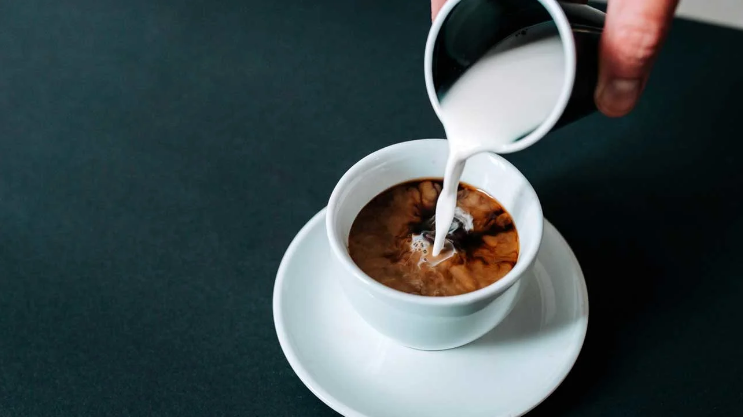CBD GUMMIES
Why Are CBD Gummy Sweets So Popular In The UKNovember 7, 2025

In the United Kingdom, heavy cream and half-and-half fall under the category of dairy products, while coffee creamer typically comprises a blend of water, sugar, and vegetable oil, undergoing substantial processing.
Taking a leisurely stroll down the refrigerated aisle of your local supermarket will reveal an array of creams and creamers lining the shelves, offering a myriad of choices for culinary adventures.
Whether you’re yearning to concoct a batch of homemade ice cream or seeking to add a touch of sweetness to your morning brew, the possibilities are endless.
Heavy cream, half-and-half, and coffee creamer stand as three of the most sought-after options. However, each boasts a unique nutrient profile and serves distinct culinary purposes.
In this discourse, we delve into the parallels and distinctions among heavy cream, half-and-half, and coffee creamer, shedding light on their diverse applications.
While heavy cream, half-and-half, and coffee creamer represent distinct entities, they share certain components and applications.
Termed as heavy whipping cream, heavy cream emerges as the dense, high-fat cream that rises to the surface of fresh milk, separated during the production process.
Many food producers expedite this separation process employing devices known as separators, hastening the division between milk and cream.
Cream is classified based on its fat content, with most nations stipulating specific standards for defining heavy cream. In the UK, heavy cream is characterised by its minimum fat content. In the US, the FDA mandates heavy cream to possess no less than 36% milkfat.
Though cream typically comprises the sole ingredient in heavy cream, some variations incorporate thickeners like gellan gum to augment its consistency.
Similar to heavy cream, half-and-half is a dairy derivative.
This product is crafted by blending equal parts cream and whole milk, resulting in a substance thinner and lower in fat compared to heavy cream. The FDA mandates half-and-half to encompass between 10.5% to 18% milkfat.
With a lighter taste and texture, half-and-half proves versatile in various recipes.
In addition to milk and cream, certain half-and-half formulations include additives such as carrageenan, enhancing the final product’s texture.
Fat-free variants of half-and-half are also prevalent, typically produced by blending skim milk with corn syrup, yielding a fat-free alternative higher in added sugar.
Diverging from heavy cream and half-and-half, coffee creamer commonly eschews dairy content, although it may contain milk derivatives such as casein. Plant-based alternatives, including almond, oat, soy, and coconut variants, cater to individuals with milk allergies.
Although the constituent ingredients may vary by brand, most coffee creamers comprise a blend of water, sugar, and vegetable oil.
Typically heavily processed, coffee creamer tends to be laden with added sugar. Certain popular varieties may contain up to 5 grams of added sugar per serving, exceeding the equivalent of one teaspoon.
For perspective, the American Heart Association recommends limiting daily added sugar intake to no more than 6 teaspoons for women and 9 teaspoons for men.
Common additives like carrageenan, cellulose gum, and artificial flavourings are employed to enhance the taste and texture of coffee creamers. Nonetheless, an assortment of coffee creamer variants exists, ranging from sugar-free and fat-free to powdered and flavoured varieties.
A primary point of divergence among these three ingredients lies in their fat content.
Given its derivation from the high-fat cream present in fresh milk, heavy cream boasts the highest fat content, typically encompassing 36% fat, or roughly 5.4 grams per tablespoon.
Conversely, half-and-half, resulting from a blend of cream and milk, contains significantly less fat. Most varieties of half-and-half contain less than half the fat content of heavy cream, typically comprising 11% fat, or about 1.7 grams per tablespoon.
While the fat content of coffee creamer varies across brands, it generally falls below that of half-and-half. A tablespoon of coffee creamer typically contains approximately 1 gram of fat.
Given these discrepancies in fat content, each ingredient presents varying caloric densities.
Heavy cream reigns supreme in both fat and calorie content, with a tablespoon containing around 51 calories.
In contrast, a tablespoon of coffee creamer contains about 20 calories, akin to the calorie count of half-and-half.
In addition to their nutritional contrasts, these ingredients diverge in taste.
Heavy cream boasts a thick consistency and rich flavour, though it tends to lack sweetness owing to the absence of added sugar.
Half-and-half resembles milk in taste but offers a creamier texture and slightly enhanced flavour.
Coffee creamer, often rich in added sugar, tends to be markedly sweeter than both half-and-half and heavy cream.
While these products share similarities in nutritional content, heavy cream, half-and-half, and coffee creamer serve distinct culinary roles.
They can be incorporated into recipes to enhance flavour and texture across a spectrum of dishes.
This versatile ingredient lends itself to diverse culinary applications. From crafting homemade sour cream, butter, or ice cream to thickening cream-based sauces and soups, heavy cream proves indispensable.
Thanks to its high fat content, heavy cream excels in producing whipped cream, retaining its structure admirably.
Certain cheeses like paneer and ricotta also leverage heavy cream, among other ingredients.
Consider experimenting with heavy cream in your next batch of buttermilk biscuits, pudding, quiche, or soups for a sumptuously rich finish.
Often employed as a lighter alternative, half-and-half enhances the flavour of cereal and sweetens hot beverages like coffee and tea.
Its creamy texture lends itself well to enriching scrambled eggs, pasta sauces, and desserts.
Substituting an equal measure of half-and-half for milk and cream in recipes is a viable option, although its lower fat content renders it unsuitable for whipping.
Available in an assortment of flavours, coffee creamer finds widespread use in enriching the taste of coffee.
A splash or two suffices to impart sweetness and elevate the coffee-drinking experience.
Coffee creamer may also be incorporated into hot cereal, hot chocolate, or tea.
For those feeling adventurous, drizzling coffee creamer over fresh fruit or incorporating it into pancake batter can infuse dishes with an extra burst of flavour.
Unflavoured coffee creamer devoid of milk derivatives can serve as a non-dairy milk substitute in soup or mashed potato recipes.
The choice among heavy cream, half-and-half, and coffee creamer during your next shopping expedition hinges on personal taste preferences and dietary considerations, as well as intended culinary applications.
For versatility in cooking, heavy cream reigns supreme, lending itself to an array of dishes encompassing soups, sauces, and desserts.
Conversely, for an ingredient capable of sweetening beverages, half-and-half may represent the healthier option.
Dietitian and Fitness Expert – Lund University, MS Nutrition plays an important role in human life. Eating habits are one of the factors that affect our health. There is often a misconception among people that nutritionists force a very restrictive diet, but that is not true. In fact, I don’t ban any products, but I point out dietary mistakes and help change them by giving tips and new recipes that I’ve tried myself. I advise my patients not to resist change and to be purposeful. Only with willpower and determination can a good result be achieved in any area of life, including changing eating habits. When I don’t work, I love to go climbing. On a Friday evening, you are most likely to find me on my couch, cuddling with my dog and watching some Netflix. [email protected]
WhatsApp us

0